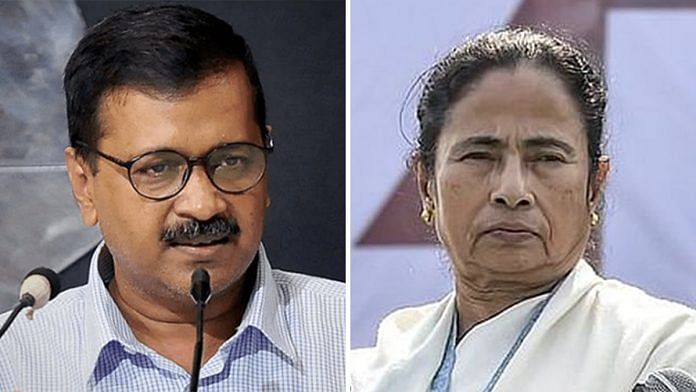After seven-and-a-half years of the Bharatiya Janata Party being in power at the Centre, there has been a lot of clamour about who will lead the Opposition in the 2024 Lok Sabha election, and pose as the main challenger to Narendra Modi.
Three points to look at as we move closer to 2024.
First, six Indian states will decide the overall fate of the BJP — Gujarat, Rajasthan, Madhya Pradesh, Chhattisgarh, Haryana, and Karnataka. What is sui generis about these states have between 10 and 29 seats, and it is in these seats that the BJP is by and large in a direct contest with the Indian National Congress.
These six states have a grand total of 129 seats, making up almost 25% of seats in the Lok Sabha.
In the 2019 election, the BJP won 122 of these 129 seats, its allies won two more, while the Congress won just four seats. Not only that, in five of these six states, there is a consistent gap of a 20% vote share between the BJP and the Congress.
At the national level, the BJP has a 92% success rate in direct contests with the Congress. This means that the people consistently prefer Modi over Rahul Gandhi.
As some analysts declare, with the Congress losing ground nationally, it will leave a political vacuum in these states, which will give the BJP an unparalleled hegemonic control there.
Some political analysts also fancy that instead of the Congress, there could be an alternative political party with a better success rate against the BJP. But it takes at least 10-15 years to build up your base in a state, hope to emerge as the main Opposition and then win the election. In these six states, that’s not likely to happen in the near future.
The contest in these seats will remain largely between BJP and Congress even in 2024. Unless a party can wipe out the BJP’s presence in these seats in 2024, it can’t contemplate about winning the national elections.
Second is the point about the question of alternative leadership, i.e., a third-party government coming to power.
The two leaders whose names come to the forefront most often are Mamata Banerjee and Arvind Kejriwal.
After winning the West Bengal election, Banerjee has started to harbour national ambitions that she will emerge as the main Opposition face in 2024. There has been a lot of noise made because of several leaders switching over to the Trinamool Congress in recent months.
But the ground reality is that she’s just a one-state leader with national ambitions, and doesn’t possess any significant clout outside West Bengal. Purely on a theoretical level, there’s a slight chance that she will perform better than the Congress in direct contest with the BJP, but again that effect will be relegated to a few seats.
The arguments put forward in favour of Arvind Kejriwal include that he has consistently been able to defeat the BJP on his turf, and unlike regional leaders, he enjoys support among various communities because he comes from a multi-cultural city like Delhi. Also, his Aam Aadmi Party’s ideology is closest to that of the Congress, and his welfare economics are a good counter to the BJP’s.
That’s quite a rosy picture of Kejriwal until you look at the ground reality. The Aam Aadmi Party possesses just one seat nationally with a vote share of only 0.44%. So, even if his party gets a sizeable seat share in the Punjab assembly as the latest statistics show, Kejriwal’s autocratic style of functioning and his inability to let alternative leaders crop up in his party pose a major impediment to him becoming a national leader.
Third, even if regional leaders offer a better leadership option vis-à-vis the BJP, that effect will largely be restricted to their respective states. The Opposition will continue to exist in a quandary, unable to put up a good fight.
As such, it will be easier to rout the BJP in 2029 instead of 2024 because there will be at least 15 years of anti-incumbency then.
The author is a student at St. Xavier’s College, Mumbai. Views are personal.




